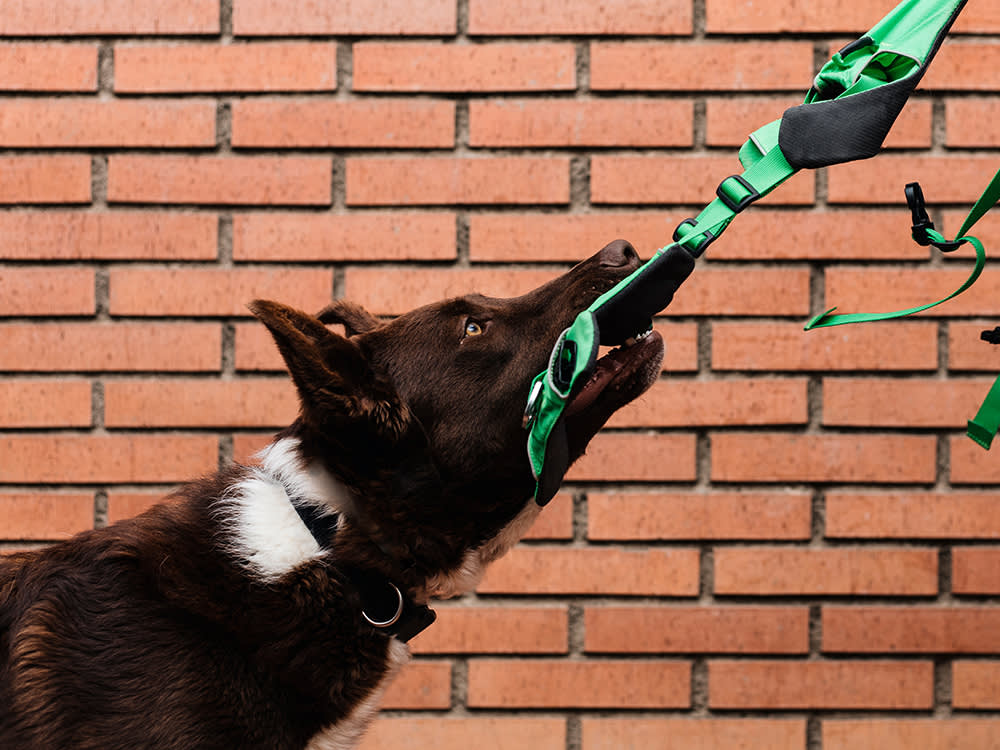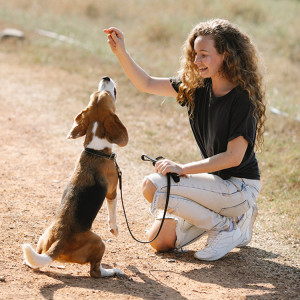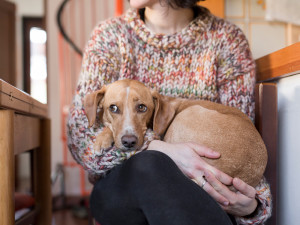Nobody Likes to Be Labeled — Especially Your Dog
(Mis)labeling behaviors does more harm than good.
As much as your high school superlative — “most likely to pull an epic prank” — isn’t meant to follow you around, labels tend to stick. While you might not be a 30-year-old placing whoopee cushions around the conference room at work, people might still expect you to be the one to crack up the room at a dull meeting that could have been an email. You’re the “fun one,” but it does not define who you are.
The same thing goes for your pup as soon as you decide who they are. When it comes to dogs, labeling often does more harm than good, especially when that label is wrong.
Trick question: All dogs are perfect! But find out which type is the best fit for you.
The Pros of Labeling Dog Behavior
It’s not surprising that we want to label dogs’ behavior issues: It matches the system we use for people. In the realm of human health care, labels are necessary, because billing codes are required for insurance coverage of both treatment and medications.
Having a label for a dog’s behavior problem may also make it easier for us to access information and resources. Learning that our dogs have a known syndrome or problem often makes pet parents feel better even before there’s any discussion about what to do to improve the behavior. It’s a natural human tendency; just naming a problem can give us a sense of control over it.
How much do you spend on your pet per year?
Maybe the biggest advantage to labeling behavior problems is that it provides a verbal shorthand that speeds up communication. There’s an appealing simplicity to using a short phrase or two to identify a dog’s issue rather than going into great detail about each incident.
The Cons of Labeling Dog Behavior
On the other hand, describing the behavior in detail lends an accuracy to the situation that labels sometime obscure. Indeed, labeling dog behavior can often lead to mislabeling, which interferes with arriving at an appropriate response to the problem, whatever the problem turns out to be.
For example, every year, multiple clients seek my help with separation anxiety because they have been told (erroneously) that their dog suffers from it.
When the real issue is boredom, incomplete house training, or a simple (which is not to say easy!) case of adolescence, changing the undesirable behavior by approaching it as a case of separation anxiety is unlikely to be successful. Instead of medication and complex protocols to change behavior, the real solution could be adding activities and enrichment opportunities, returning to house training 101, or providing a long exercise session before putting the dog in a crate with appropriate, long lasting chewables.
It is also common for people to be concerned because their dog is “protective” of them. Lila brought Banjo to me because every time anyone got near Lila, Banjo barked, growled, and lunged. Lila was concerned that he would hurt someone, but delighted by his bold confidence. Trouble was, after taking a case history and observing Banjo in a variety of contexts, I could tell that he was not protecting her so much as he was possessing her.
He guarded toys, food, sleeping spaces, and anything he considered of value, including Lila. He was not her brave protector, but an insecure dog who considered her to be the best bone in the world, and he was not going to let someone else have her. Mislabeling Banjo’s behavior as “protectiveness” rather than of “possessiveness” hindered attempts to change this behavior and interfered with Lila’s understanding of who Banjo was.
Another problem with labeling behavior problems is that it oversimplifies the situation. If a dog is called a “fear biter” or even labeled with the more professional sounding “fear-based aggression,” it implies a simplicity that is just not there.
A related drawback of labeling behavior problems is that the label seems to require a simple solution. Boxed-in thinking about how to change undesirable behavior can short-circuit continued investigation. For example, using the label “arousal-based aggression” gives the impression that all that is needed is an appropriate behavior modification program. But that label may mask the dog’s anxiety and the need for intervention to address it.
(Mis)labeling Dog Behavior May Lead to Unnecessary Shame
There’s also the issue of shame; giving a dog’s problem a label makes it seem more serious and alarming to pet parents and may make them feel unnecessarily ashamed of their dog’s behavior. That’s especially true of any label that includes the word “aggressive,” which carries a stigma.
People are often devastated to be told that their dog is aggressive, especially if the dog is sweet and loving within the family. It can be even harder for a family whose dog is behaving out of character because of an injury. If the dog is in such pain that the problem behavior is just the dog’s attempt to keep people from touching them, I would rather say that than call the dog “aggressive.”
If people understand that dogs are barking, growling, or biting because they are desperate to increase the distance between themselves and whatever scares them (i.e., other dogs, people, trash cans, bicycles) and will only stop if we can help them overcome their fears, there’s less judgment and more hope. Focusing on the behavior itself — what the dog does— and discussing the motivation behind it avoids problems that can come up with simply labeling the behavior.
(Mis)Labeling Dog Behavior
I recently consulted with a family whose dog was a victim of a labeling error that made it impossible for them to help him. This family’s sweet, three-year-old Newfoundland was peeing inside the home and because their veterinarian could find no medical reason for it, she had referred them to me handle the “house training” problem. One complication with this particular label is that there is no agreement across disciplines about what it means. To many people, accidents without a medical cause are always related to house training. But behaviorists recognize that urination indoors can be signs of appeasement behavior or a need to mark territory, among other possibilities.
It was a challenge to get contextual information from the family about the problem because they just kept saying, “He pees everywhere, and it’s such a mess!” I was finally able to get a more complex picture; it turned out not to be a house training problem after all. The dog’s house training was solid, but he peed during greetings. As a puppy, he urinated whenever he greeted anyone, but now he only did it when greeting the husband or the occasional male visitor, especially if the visitor reached for the dog.
Recognizing that the inappropriate urination was a specific type of social issue (often called “submissive urination” and somewhat unusual in dogs older than 12 to 18 months of age) rather than one of bladder control made it easier to address the real issue: the husband’s approach to his sensitive dog.
I was able to help the family by teaching the husband kinder, gentler, and more effective ways to interact with his dog and influence the dog’s behavior. As a result, the dog stopped doing his business in the house.
The Bottom Line
The temptation to put a name on a problem is strong, and many of us are quick to embrace it. While labeling seems like an intuitively obvious approach, the downsides are too important and too numerous for me to be on board with it. Labels can turn dogs into a stereotype, rather than what they actually are: individuals that shouldn’t be judged by one label. Just like their parents.










